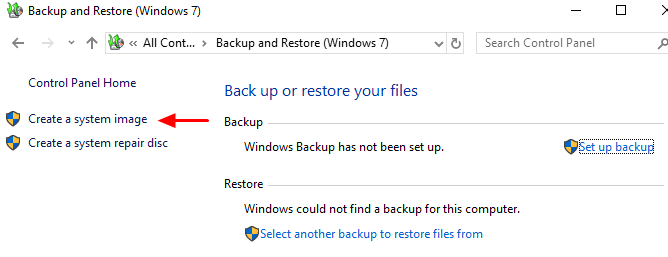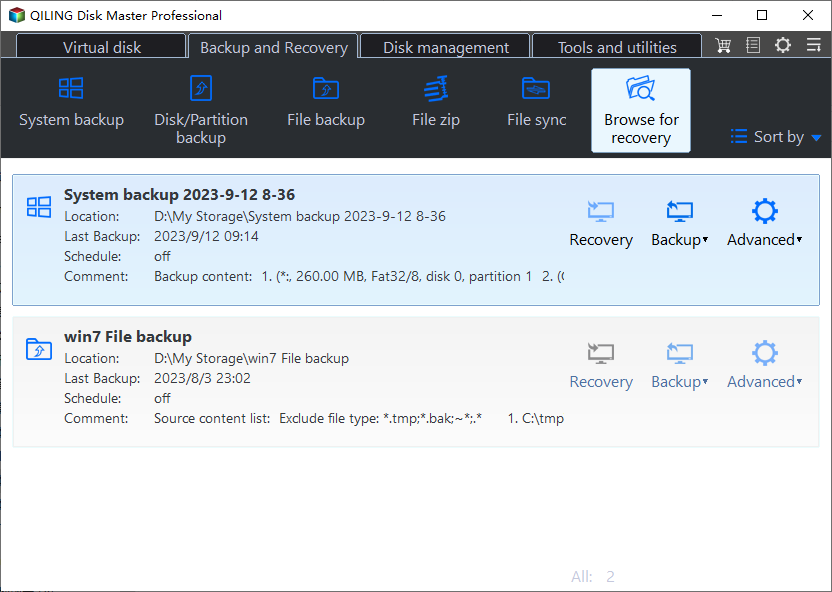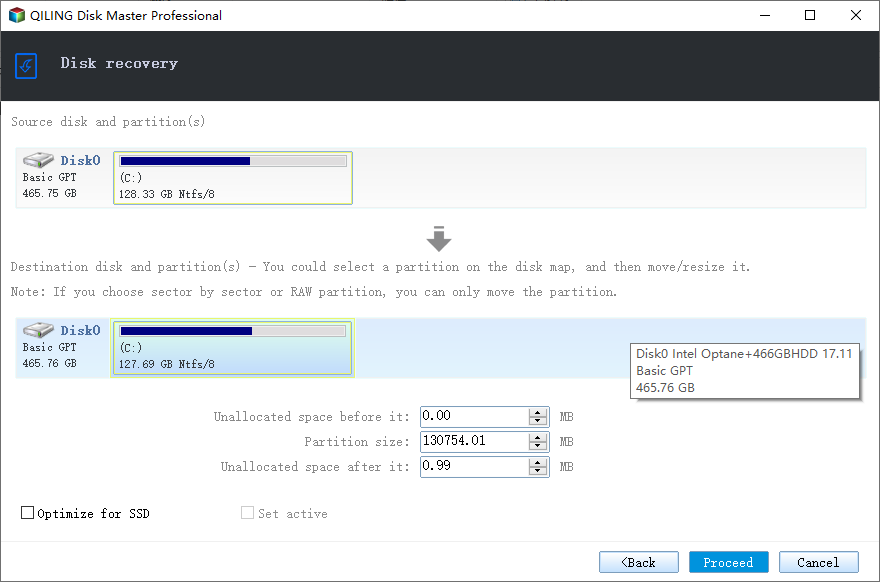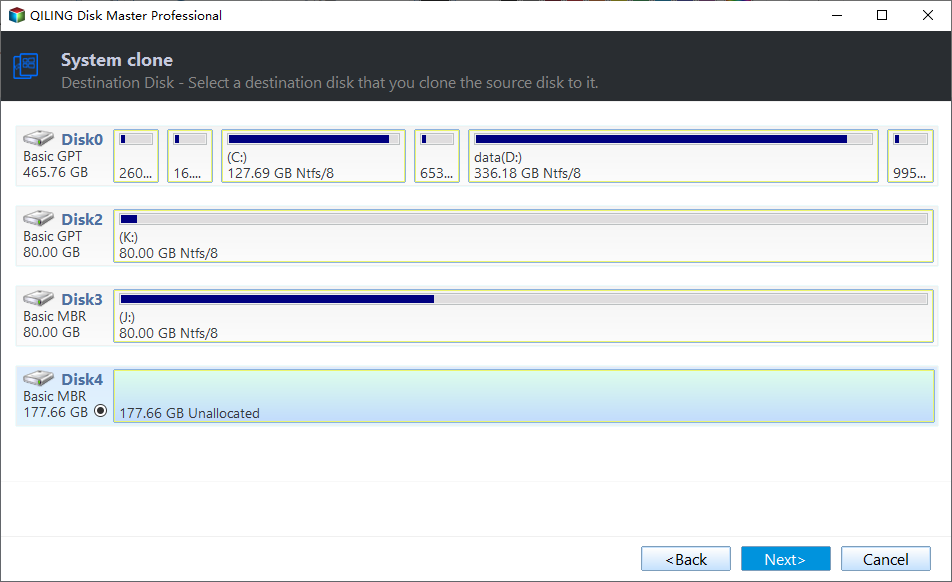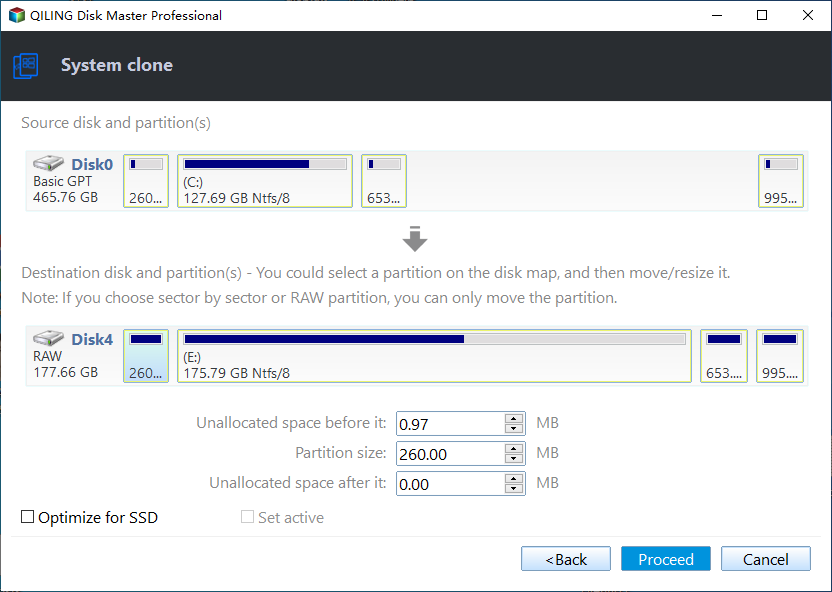3 Ways | Transfer Windows System Image to Another Drive Easily
Content of this article:
- Why Transfer System Image to New Hard Drive
- The built-in tool in Windows allows you to create a system image and transfer it to a new hard drive. Here's how to do it:
- Using bootable media to copy a Windows image to another drive is a reliable method. Here's how to do it:
- Moving a system image to a new hard drive directly is the easiest way to transfer your Windows installation to a new drive. Here's how to do it:
- FAQs on Restoring Windows Image Backup to Another Drive
- Conclusion
Why Transfer System Image to New Hard Drive
Upgrading to a larger hard drive can breathe new life into your computer, but reinstalling the operating system on the new drive can be a daunting task. Fortunately, there's a faster and easier alternative: using a system image to transfer your Windows installation to the new drive.
Windows allows users to create a system image backup that includes all the necessary data and applications for Windows to run, including settings, programs, and files. If your hard drive fails, you can restore this system image backup to a new drive to get everything back to normal. You can even directly transfer the system image to a new hard drive.
For Windows 11/10/8 users, you can create a recovery drive with a common USB flash drive and then restore Windows image backup to another drive. Windows 7 users will need to prepare a CD or DVD to create a system repair disc for booting the computer normally. Alternatively, you can use third-party software to help with the transfer process (Method 2).
1. Copy System Image to New Drive via the Built-in Tool
If your hard drive fails, you can restore Windows to a new drive using a system image backup. This process is straightforward and can be completed in a few steps.
Step 1. Search Backup and Restore in the search bar and click it. Click Create a system image on the left side. Choose the destination to save the backup. You can choose to save the system image to the DVD if you have one. Or you can save it on one external hard drive.
Step 2. Confirm the backup settings and click Proceed to start. When the process completes, you will be asked if you want to create a system repair disc that can help to boot your computer. Please click Yes to make one if you have a CD/DVD. Or you can create bootable disc with your USB flash drive.
Step 3. Shutdown the computer and replace the old hard drive with the new one and boot computer from the system repair disc. Follow the guide to restore Windows 10 system image to new hard drive.
Indeed, copying Windows image backup to a new hard drive using the built-in tool can be somewhat complicated. However, if you're willing to go through the trouble, it's a viable method that is worth trying.
Alternative Way to Transfer Windows System Image
Copying a Windows image to another drive or computer can be a convenient method for restoring your system. While the built-in Windows tool can be used, more versatile software like Qiling Disk Master Professional offers a more efficient and user-friendly solution.
a). Qiling Disk Master Professional is a software that offers a more efficient and user-friendly solution for system migration. It allows you to transfer disk images to a new hard drive through the method of backup and restoring. This software is similar to the built-in tool, yet comes with additional useful features.
b). Clonezilla is a free and open-source disk cloning software that offers a simple and efficient solution for system migration. It allows you to clone a disk image to a new hard drive, which can then be used to boot your computer without requiring a restoration process.
2. Copy Windows Image to Another Drive via Bootable Media
Qiling Disk Master is a powerful and user-friendly system migration software that allows you to move your system image to a new hard drive with ease. Its simple and intuitive GUI makes it accessible to anyone, even those without technical expertise.
- High Compatibility: It is compatible with a wide range of Windows operating systems, including Windows 11/10/8.1/8/7/XP/Vista.
- Versatile Backup and Restore Solutions: You have the flexibility to choose from various backup and restore options. Whether you want to back up the entire system, disk, files, or partitions, it has got you covered.
- Flexible Backup Scheduling: Customize your backup schedule to your preferences. You can set up daily, weekly, or monthly backups, or take advantage of advanced features like USB plug-in or Event triggers. Additionally, it allows you to perform incremental or differential backups, saving only the changes made to your files.
- Support for Various Storage Devices: Rest assured, it supports a wide array of storage devices, such as external hard drives, USB drives, network drives, NAS, and popular cloud drives like Google Drive, or Qiling Cloud.
💛 Preparations
- Prepare an external hard drive to store backup image and a USB drive to create bootable media.
- Download and install Qiling Disk Master Professional.
Then, follow the steps below to copy system image to new hard drive in a few clicks. Here take Windows 10 as an example.
Step 1. Launch Qiling Disk Master. First create a system image to external hard drive and then create a bootable media for booting your computer.
Step 2. Replace the old hard drive with the new drive. Insert the bootable media and enter the BIOS mode to select where to boot from.
Step 3. After booting, you will enter the interface of Qiling Disk Master. To restore your system, follow these steps:
Step 4. Select Restore this system backup and tick Restore system to other location in the bottom. Then, click Next.
Step 5. Select the new hard drive as the destination path to receive the restored system.
Step 6. Confirm the operation and click Proceed to restore Windows 10 system image to new hard drive.
Notes:
❤ The above steps also apply to restoring Windows 11, 8, or 7 system image to new hard drive.
❤ If you want to copy Windows image to another computer, it's suggested to check "Universal Restore" feature. Or, your computer may fail to boot owing to incompatible drivers' issue.
Additionally, this software still allows you to clone hard drive in Windows 10/11, clone Windows 10/11 to external hard drive, copy data from one SSD to another SSD, clone NVME to another NVMe, etc., to upgrade hard disks.
3. Move System Image to New Hard Drive Directly (Easiest Way)
Cloning a system image to a new hard drive is a straightforward process that allows you to transfer your entire system, including the operating system, programs, and data, to a new drive. This method is particularly useful when upgrading to a faster or larger hard drive. Let's explore the process using Windows 11 as our example.
Step 1. Upgrading to a new hard drive can breathe new life into your PC, but it can also be a daunting task. Fortunately, migrating Windows 11 to a new hard drive is a relatively straightforward process. Here's a step-by-step guide to help you through it.
Step 2. Upgrading to a new hard drive can breathe new life into your PC, but it can also be a daunting task. Fortunately, migrating Windows 11 to a new hard drive is a relatively straightforward process. Here's a step-by-step guide to help you through it.
Step 3. Confirm the operation and click Proceed to make it.
Notes:
Upgrading to a new hard drive can breathe new life into your PC, but it can also be a daunting task. Fortunately, migrating Windows 11 to a new hard drive is a relatively straightforward process. Here's a step-by-step guide to help you through it.
Upgrading to a new hard drive can breathe new life into your PC, but it can also be a daunting task. Fortunately, migrating Windows 11 to a new hard drive is a relatively straightforward process.
Upgrading to a new hard drive can breathe new life into your PC, but it can also be a daunting task. Fortunately, migrating Windows 11 to a new hard drive is a relatively straightforward process. Here's a step-by-step guide to help you through it.
Step 4. Upgrading to a new hard drive can breathe new life into your PC, but it can also be a daunting task. Fortunately, migrating Windows 11 to a new hard drive is a relatively straightforward process. Here's a step-by-step guide to help you through it.
FAQs on Restoring Windows Image Backup to Another Drive
1. Can I transfer a system image to a new hard drive?
Transferring a system image to a new hard drive can be a lifesaver when your old drive fails or becomes outdated. Fortunately, the process is relatively straightforward. Here's a step-by-step guide to help you through it.
2. Is it possible to restore a system image to another computer?
Restoring a Windows image backup to a different drive can be a bit tricky, especially when it comes to driver compatibility. However, with the right tools, you can overcome this obstacle and successfully restore your image. Here's a step-by-step guide to help you through it.
3. What does a system image include?
A system image is a complete backup of your Windows system, including the operating system, system drivers, installed programs, personal data, and more. It's a snapshot of your entire system, which can be restored to a different drive or computer in case of a failure or upgrade.
4. Which is better: cloning or imaging a hard drive?
Cloning and imaging are two distinct processes used to copy or capture the contents of a hard drive. While they share some similarities, they serve different purposes and have distinct advantages.
5. Can I use a system image to upgrade to a larger hard drive or SSD?
Upgrading to a larger hard drive or SSD can be a great way to breathe new life into your computer, but it can also be a daunting task, especially if you're not familiar with the process. One way to make the upgrade process easier and less time-consuming is to use a system image.
Conclusion
Transferring a system image to a new hard drive can be a convenient way to upgrade your computer's storage capacity. Windows provides a built-in tool for this purpose, but the process can be complex and time-consuming.
For users looking for a more advanced and efficient solution, Qiling Disk Master Pro is the recommended choice. This software offers a range of features that make it an ideal tool for transferring system images and serving as a reliable backup assistant.
For businesses seeking to protect multiple computers, Qiling Disk Master Technician Plus is the ideal option. This software offers a range of features that make it an ideal tool for deploying and restoring system image files on multiple client-side computers over the network.
Qiling Disk Master Technician Plus offers a comprehensive backup solution for businesses, providing a range of features that make it an ideal tool for deploying and restoring system image files on multiple client-side computers over the network.
Related Articles
- Best Way to Transfer Windows 7 to New Hard Drive without CD
- How to Transfer Windows 10 to New Hard Drive without Reinstalling
- 2 Easy Ways to Transfer Disk Image to a New Hard Drive
- Create Windows 10 System Image on USB Flash Drive Easily

